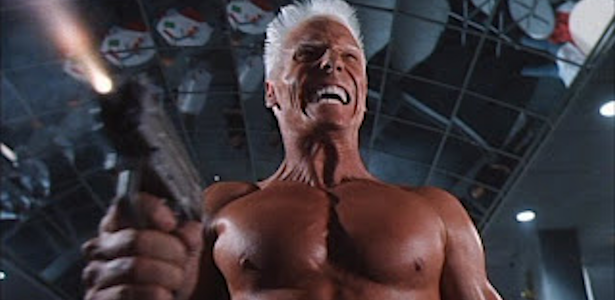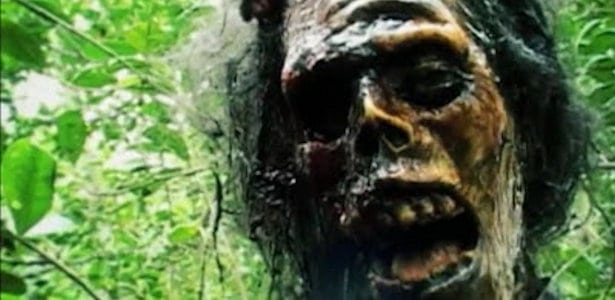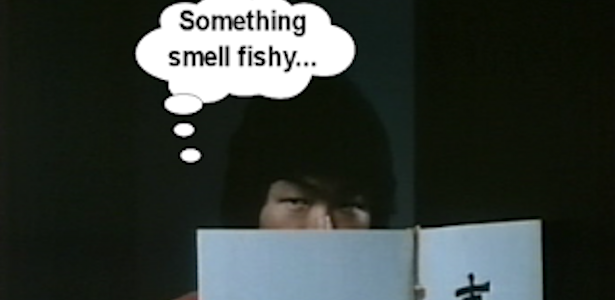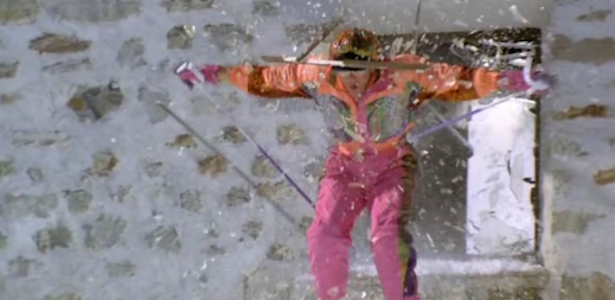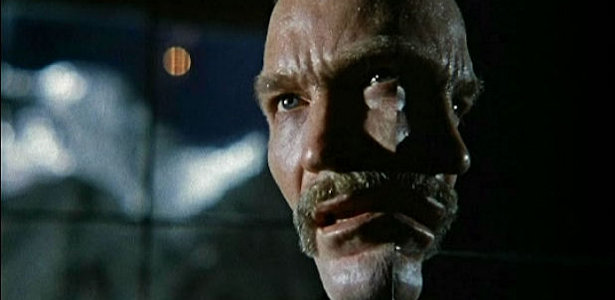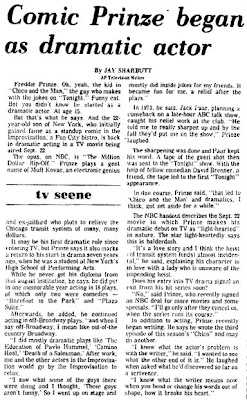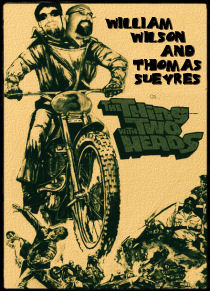Over the past decade H.P. Lovecraft has had a resurgence of popularity not seen since the ‘80s. To many of us, he never went out of style, but with the reduced cost in digital production, it has suddenly become a popular subject for low-budget filmmaking. It also should be pointed out that no studio is going to want to produce a film in which things cannot be named and there is stuff that is not meant to be known. Hollywood films are all about names and explanations. Everything has to have a backstory. If you have aliens, Hollywood studios demand to know where they come from, why they hate humans and what they had for breakfast. Another thing Hollywood hates is atmosphere. Every scene needs to be lit up like a K-Mart in September. No shadows, but plenty of flood fills because we need to see the thread-count on Freddy Krueger’s latest woolen knit sweater, or the TV-weened kids in the test screenings will complain.
 Most of the love for H.P. has come in the form of short films of varying quality. Some, such as Brian Moore’s excellent COOL AIR (1998), are stripped-to-the-bone adaptations that overcome their extreme budgetary limitations with deft handling of the material. Some miss the other-worldly portal entirely and some, or rather one, nails it so perfectly that it leaves you in awe. Not just the adaptation of the story, but the framework and the details make THE CALL OF CTHULHU (2005) one of the best, if not the best H.P. Lovecraft short film to date. So now what? Well the founders of the H.P. Lovecraft Historical Society and creators of CALL, Sean Branney and Andrew Leman, decided to spend the next six years letting the accolades roll in, watching Gilligan re-runs and only rolling off the sofa to hoist another poor-man’s champagne out of the fridge, right? Heeeeeeell no! In that long six years Branney and Leman spent three years (yes, three years) just hammering out a script for their first feature-length film, THE WHISPERER IN DARKNESS! Yeah, sure, Hollywood is full of stories about development hell where the studio bigwigs are sold on some high-concept motion picture event and then spend the next decade paying 20 other schlubs to re-write it. Of course after going through the script-grinder for years, when the execs finally fire-up the ol’ green light, you end of up with a nails-on-a-chalkboard endurance test like INDIANA JONES AND THE KINGDOM OF THE CRYSTAL SKULL (2008). Here, Branney and Leman actually made the script a finely tuned instrument that resonates Lovecraft like Dr. Pretorious’ infernal machine.
Most of the love for H.P. has come in the form of short films of varying quality. Some, such as Brian Moore’s excellent COOL AIR (1998), are stripped-to-the-bone adaptations that overcome their extreme budgetary limitations with deft handling of the material. Some miss the other-worldly portal entirely and some, or rather one, nails it so perfectly that it leaves you in awe. Not just the adaptation of the story, but the framework and the details make THE CALL OF CTHULHU (2005) one of the best, if not the best H.P. Lovecraft short film to date. So now what? Well the founders of the H.P. Lovecraft Historical Society and creators of CALL, Sean Branney and Andrew Leman, decided to spend the next six years letting the accolades roll in, watching Gilligan re-runs and only rolling off the sofa to hoist another poor-man’s champagne out of the fridge, right? Heeeeeeell no! In that long six years Branney and Leman spent three years (yes, three years) just hammering out a script for their first feature-length film, THE WHISPERER IN DARKNESS! Yeah, sure, Hollywood is full of stories about development hell where the studio bigwigs are sold on some high-concept motion picture event and then spend the next decade paying 20 other schlubs to re-write it. Of course after going through the script-grinder for years, when the execs finally fire-up the ol’ green light, you end of up with a nails-on-a-chalkboard endurance test like INDIANA JONES AND THE KINGDOM OF THE CRYSTAL SKULL (2008). Here, Branney and Leman actually made the script a finely tuned instrument that resonates Lovecraft like Dr. Pretorious’ infernal machine.
During the very real Vermont floods of 1927, farmers begin reporting sightings of strange winged, crab-like creatures. The controversy in the newspapers sparks debate among the academics and the student body of the prestigious Arkham University in nearby Massachusetts. One of such person is Professor Albert Wilmath (Matt Foyer and period toupee), a folklorist who maintains, what he believes to be, a firm grasp on reality. After being involved in a literal debate with real life writer Charles Fort (Andrew Lehman under some very impressive make-up), Wilmath is contacted by the son of a Vermont farmer Henry Akeley (Barry Lynch), who has been trying to convince Wilmath to come out to Vermont to see his farm and possibly the creatures that surround it on a nightly basis. After some photographic evidence and continued chiding from Fort, Wilmath sucks it up and heads out to the wilds of Vermont to meet with Akeley and disprove him for the charlatan that he, of course, is. Things go horribly wrong. Yes, that’s it. That's all I’m going to reveal about the plot. There’s a lot more, but I really don’t want to spoil any of it. Let’s just say that the Mi-Go are featured prominently, but have been re-envisioned with a surprising twist that may not be totally Lovecraftian, but certainly is fitting for the period and pretty damn nifty.
I’ve often said that when bringing Lovecraft to the screen, some elaboration is probably a good idea. Obviously this depends on the direction you go. You can take Lovecraft to the streets of modern Los Angeles, add a handful of staggeringly bad acting and even worse CG effects and end up with something utterly laughable like THE CHILL (2007), or you can tweak the story, add subplots and flesh it out into something that stays true to Lovecraft to a point, but makes for a great cinematic experience, such as THE COLOUR FROM THE DARK (2008), or… you can have your fungi and eat it too. Branney and Leman have managed to add subplots and an entire third act to the story that not only add depth and structure to the story, but actually retain the spirit of Lovecraft, with some caveats. Lovecraft would have never written the biplane scene, nor the “emotional attachment” bit with the little girl, Hannah Masterson (Autumn Wendel), but paths they end up taking ring true in spite of that. Any of these minor inconsistencies are easily overlooked, however, due to the sure-footed production and high level of craftsmanship.

The brilliant concept behind CALL was to make the film in the style of the era it was written in. So here, they have decided to continue that philosophy and make this in the style of what they claim to be an early ‘30s film. I don’t know about early ‘30s, specifically, it feels more like a mash-up of ‘30s, ‘40s and ‘50s, but that’s just being pedantic. It is easily the most successful period-style genre film since YOUNG FRANKENSTEIN (1974) and DEAD MEN DON’T WEAR PLAID (1982), and those were both comedies. The level of painstaking detail in virtually every scene is nothing short of amazing. Even more amazing is the filmmakers accounts of even more grueling tedious work that is completely transparent when viewing the film. A simple sequence in which Wilmath simply waits to meet Akeley's son who has come to meet him on a period-correct train was in fact an ordeal to film, simply because the train ran on its own schedule and Branney and Leman didn’t want to use CGI or work around the sequence. They could have the easy way out and shot a close-up of Wilmath sitting at the station and used sound effects or voice over to convey that there is a train. That's what The Asylum would have done. Actually they would have shot the train leaving the station and left in all the tourists in modern attire. Actually, they pretty much did do that. But not our HPLS guys! It would be too easy, and it would look cheap in the final film. To paraphrase the late Mr. Kennedy, they don’t do it because it’s easy, they do it because it’s hard. I love these guys!
That said there is CGI this time around, but it is due to the lack of budget to do everything in camera. Branney and Leman originally wanted to do the creature effects in stop-motion miniature, which would have been incredible, but it became obvious that it was going to be far too labor intensive and thus far too costly and decided to go with CG. But not just CG. CG that looks like stop-motion! How cool is that? In spite of the CG here and there, a large amount of effects are physical, including real smoke! Yeah, I know it seems like a simple thing. Bring in a smoke machine, get a couple of guys to wave some fans and you’re in business, right? For some reason, low-budget and digital shot films in particular, simply refuse to do this. Need some atmospheric fog or smoke? Call up the guy with Video Toaster! It never fails to do exactly the opposite of the intention. It looks cheap and tacky and detracts from the scene. Here we have real smoke and a single light-source – in the same shot! Man, I almost cried. Seriously, that’s all it really takes to thrill me. If ISHTAR had been shot in black and white with a smoke machine and a single light source it would be my favorite movie of all time. And maybe with some split focus shots and oblique angles and… ok, well, you get my point.
Speaking of things that just aren't done anymore; the brilliant opening scene, inspired by THE LADY VANISHES (1938), in which the camera pans down from the credits, past a matte-painting and into an intensely detailed miniature, is really the kind of thing we just don’t see in cinema at all these days, much less in a low-budgeted independent feature. The sweeping score by Troy Sterling Nies also adds an element of richness and class that would have otherwise been absent, making the whole film feel like a genuine studio release from the past. Additionally, special effects maestros Dave Snyder (make-up effects) and Fred Manchento (miniatures/models) turn in some seriously stunning work that rival anything put out by a major studio. Manchento’s massive Round Mountain miniature set with aproximately 1000-2000 hand-made trees and an internally lit, forced perspective cave tunnel is nothing short of awe-inspiring. The same can be said for Snyder’s re-creation of Lynch’s face and hands. I seriously doubt the majors would have even considered taking the time to make such detailed prosthetic works and would have gone straight to the CG department.
Before I start getting pelted with rotten vegetables for gushing like a fanboy, let me see if I can find something to grumble about. In CALL OF CTHULHU, Branney and Leman made the movie look like an old film. They processed the image to give it a slightly over-exposed white glow that that are indicative of films from the silent era. Also the image had scratches and imperfections that really brought that feeling home. Out of the dozens upon dozens of fantastic details that are present in WHISPERER, that is the one that is obvious by its omission. Everything else is so dead on, that the crisp, clean image and audio pull you away from suspending the belief that this is a lost horror-noir classic. Also, you could kibbitz that some of the acting is a bit stagey. Expressions are bigger than they need to be and a little over dramatic at times. However, these are stage actors who are acting like they are in a period film and films of the '30s did tend to have a stage-like quality due to the actors and the fact that cameras were literally immobile during scenes with sound due to the heavy baffling of the cameras. Oh, and while Matt Foyer does a fine job as Wilmath, but I kept waiting to give me some quirky cooking tips. Honestly, he really could kidnap Alton Brown and take over his life.
It’s amazing and a real shame that a film of this quality has to go out self-published, but then again, I suspect that there is no studio on earth that would let this movie be what it is. So many concessions would have to be made that it would be a completely different film in the end. That is what makes this film more than the sum of its parts. WHISPERER is without question one of the best indy productions to come along since… well, since THE CALL OF CTHULHU and in all seriousness, I can't think of a single digital movie that is more ambitious or as genuinely entertaining. What will HPLS' next project be? There have been some mutterings about the oft-attempted story The Shadow Over Innsmouth, but nothing has been announced as of yet. One thing is for certain, the digital feature bar has been raised. I would love to see more people rise to this challenge and make digital features that do the hard work and show a… ahem… love for the craft. Oh, “boo” yourself.




